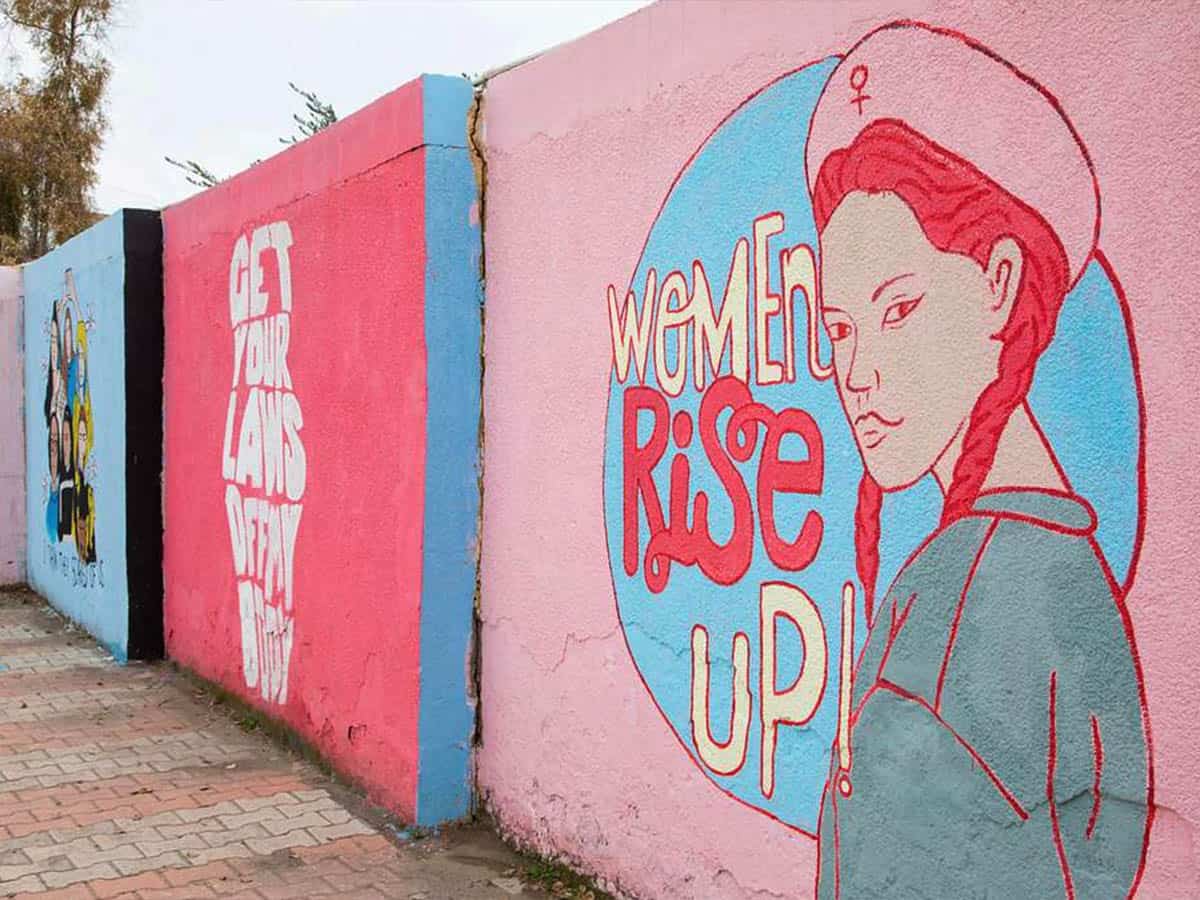
By Moumita Barman and Vajra Zayara
The recent National Conference on Gender and Inclusion on 14 March 2024 marked a significant milestone as it convened leaders, experts, and activists to address the pressing issue of women’s participation in the workforce. Hosted at Presidency University, Bangalore, in collaboration with institutions such as the Centre for Development Policy and Practice (CDPP), Digital Empowerment Foundation, and Maulana Azad National Urdu University (MANUU), the event brought together a distinguished lineup of speakers who shared invaluable insights, strategies, and best practices aimed at fostering a more inclusive environment for working women.
One of the standout moments of the conference was the address by Vinita Bali, a trailblazer in the corporate world and former Managing Director of Britannia. Bali’s journey in breaking through the corporate glass ceiling during a time when female CEOs were a rarity underscored the persistent challenges faced by women in the workforce. Despite advancements in economies worldwide, gender parity remains elusive, as highlighted by Bali’s reference to the World Economic Forum’s sobering statistic indicating 131 years until gender equality is achieved at the current pace.
Bali’s call for a paradigm shift in India’s approach to gender equality resonated throughout the conference, emphasizing the need to recognize and empower women across all sectors, including traditionally overlooked areas such as agriculture and healthcare. Dr Gayathri Vasudevan, Chief Impact Officer of Sambhav Foundation, further illuminated these challenges through personal anecdotes, shedding light on the barriers encountered by working women on a daily basis.
The conference’s panel discussions delved into the root causes of the declining female labor force participation, citing factors such as limited decision-making power, economic constraints, and childcare responsibilities. Dr Abusaleh Shariff, Executive Director of the US-India Policy Institute, led a thought-provoking discussion on the importance of data-driven solutions to address these disparities, emphasizing the need for tailored interventions to support women in both rural and urban settings.
As the day progressed, panelists explored strategies to tackle the multifaceted challenges faced by women in the workforce, including the role of legislative frameworks and digital empowerment initiatives. Puja Marwaha, CEO of CRY, highlighted the importance of bridging the digital divide to ensure equal access to economic opportunities for women from diverse backgrounds.
The conference concluded with a resounding call to action from Meenakshi Gupta, Co-Founder of Goonj, affirming the indispensable contribution of women to India’s burgeoning economy. The discussions underscored the urgent need for equitable policies and dignified labor laws to ensure that women are afforded equal opportunities and fair treatment in the workforce.
While the conference provided a platform for meaningful dialogue and reflection, it also highlighted the complex and interconnected nature of the challenges facing women in the workforce. From cultural norms and societal expectations to systemic barriers and institutional biases, the road to gender equality is fraught with obstacles that require concerted and sustained effort to overcome.
One area of particular concern is the persistent gender wage gap, which continues to undermine the economic security and well-being of women across India. Despite decades of advocacy and awareness-raising efforts, women continue to earn significantly less than their male counterparts for comparable work. This disparity not only perpetuates economic inequality but also reinforces harmful stereotypes and undermines the dignity and worth of women in the workforce.
Furthermore, the conference shed light on the intersectional nature of gender inequality, highlighting the unique challenges faced by marginalized and underrepresented groups, including LGBTQIA+ individuals and women from minority communities. Discrimination and bias based on gender identity, sexual orientation, race, religion, and caste further exacerbate existing inequalities, making it even more difficult for women to access and thrive in the workforce.
In order to address these complex and intersecting challenges, it is imperative that we adopt a holistic and inclusive approach to gender equality that takes into account the diverse needs and experiences of women from all backgrounds. This includes implementing targeted interventions to address the specific barriers faced by marginalized groups, as well as promoting cultural and institutional changes to create a more inclusive and supportive environment for all women.
One promising avenue for progress is the growing recognition of the economic value of gender diversity and inclusion. Numerous studies have shown that companies with more diverse leadership teams tend to outperform their less diverse counterparts, demonstrating the tangible benefits of gender equality for business performance and economic growth. By harnessing the full potential of women in the workforce, we can unlock new opportunities for innovation, creativity, and prosperity that benefit society as a whole.
However, achieving gender equality in the workforce will require more than just corporate initiatives and policy reforms. It will also require a shift in societal attitudes and cultural norms that perpetuate gender stereotypes and limit women’s opportunities for advancement. This includes challenging traditional notions of gender roles and expectations, as well as promoting positive representations of women in the media, education, and popular culture.
Ultimately, the fight for gender equality in the workforce is a fight for justice, dignity, and human rights. It is a fight that requires the collective effort and commitment of individuals, organizations, and governments across all sectors of society. By working together to dismantle barriers and create a more inclusive and equitable world for women, we can ensure that every individual has the opportunity to reach their full potential and contribute to the collective prosperity and well-being of society as a whole.
As we look to the future, we must draw inspiration from the discussions and insights shared at the National Conference on Gender and Inclusion and redouble our efforts to build a world where women are valued, respected, and empowered to succeed in every aspect of life. Only then can we truly unlock the full potential of our society and build a future where gender equality is not just a distant dream, but a tangible reality for all.
Looking ahead, it was decided that the theme for next year’s conference will focus on the intersection of digitalization and women, exploring how technological advancements can be leveraged to advance gender equality and empower women in the workforce. This timely topic promises to further enrich our understanding and drive meaningful progress towards a more inclusive and equitable future for all.
Moumita Barman is a Research Associate at the Centre for Development Policy and Practice (CDPP) while Vajra Zayara is a research intern at CDPP.

